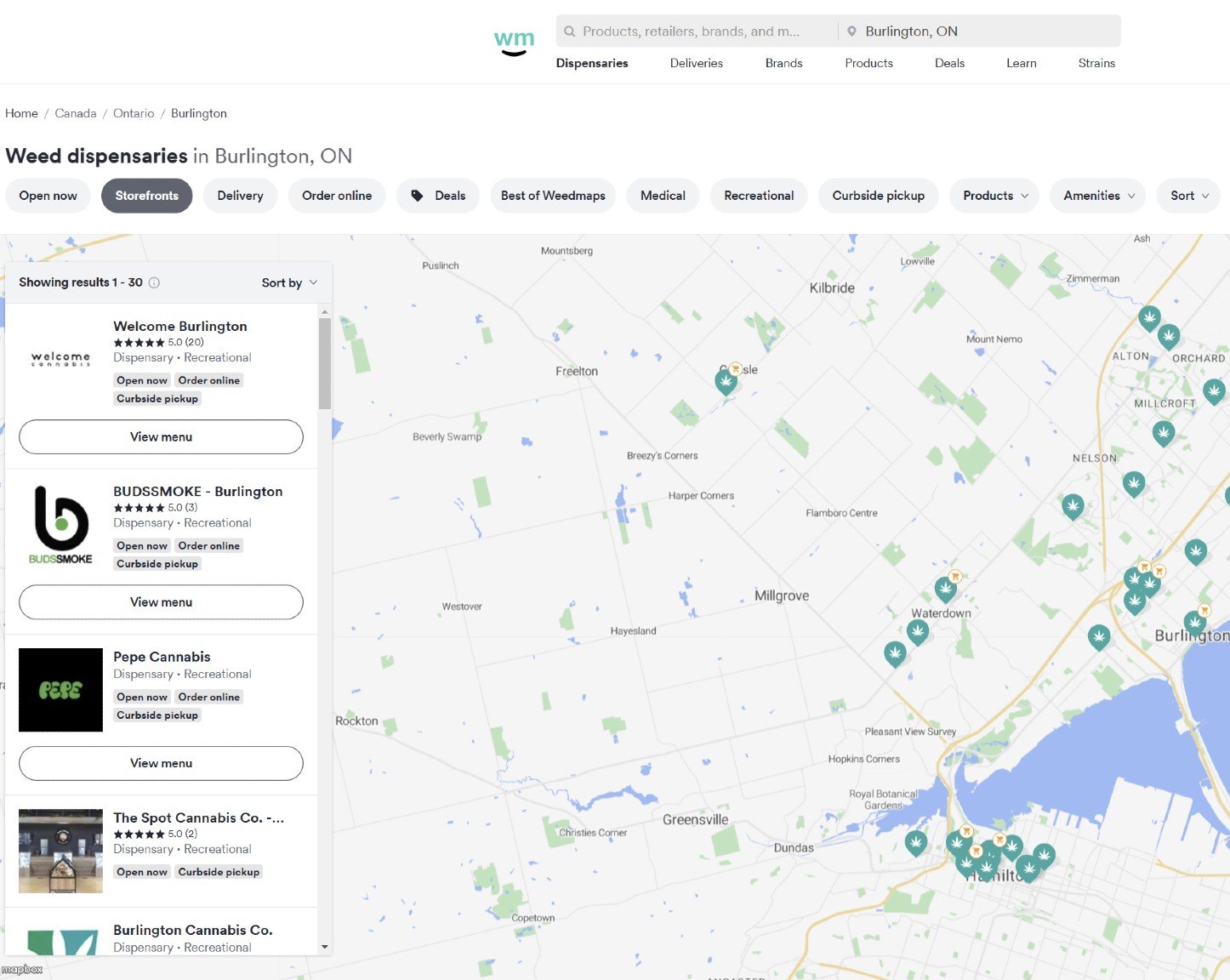Weedmaps vs. Leafly: Why SEO Is a Better Long-Term Investment for Dispensary Owners
- November 11, 2024
Listen to the blog!
In the rapidly growing cannabis industry, dispensary owners need to make smart marketing investments. Many turn to well-known third-party platforms like Weedmaps and Leafly to boost visibility and attract customers because they are so well-known and have been around for a while. Both platforms offer a lot of potential, but there’s a catch: relying solely on these services means you’re at the mercy of external companies, with rising fees and unpredictable algorithm changes. In contrast, investing in SEO and digital marketing for your own website is a smarter, long-term strategy that builds your business’ independence and grows your digital asset.
Let’s break down the pros and cons of using third-party platforms like Weedmaps and Leafly, and why SEO can offer a better return on investment (ROI).
Weedmaps vs. Leafly: What They Offer
Weedmaps and Leafly are two of the biggest names when it comes to cannabis directories. They both offer dispensary owners access to millions of potential customers actively searching for cannabis products.
Weedmaps focuses heavily on showcasing dispensaries and their product menus. It’s designed to drive traffic to local businesses, with features like product menus, customer reviews, deals, and map listings. On the flip side, Leafly started as a strain review site and has since grown to include dispensary directories, boasting even more website visitors. While Leafly’s broad reach can help build brand recognition, its prices are significantly higher, with some locations paying up to $4,000 a month.
At first glance, these platforms seem like a no-brainer, but there’s a hidden cost that dispensary owners need to consider.


The Hidden Cost of Third-Party Platforms
When dispensaries sign up with third-party platforms like Weedmaps or Leafly, they often don’t realize the full picture. Beyond the high monthly fees and competition, there are a few dirty secrets these platforms would rather dispensary owners didn’t know about.
One of the most glaring issues involves Weedmaps’ legal troubles. In 2021, Weedmaps’ parent company, WM Holding, was sued by the U.S. Securities and Exchange Commission (SEC) for misrepresenting its user and revenue numbers ahead of its public offering. The lawsuit claimed that Weedmaps had inflated its performance metrics to attract investors, raising concerns about the accuracy of the traffic numbers it reports to dispensaries. If Weedmaps was willing to mislead investors, how confident can dispensaries be that the platform is truly driving the amount of traffic it promises?
But that’s not the only controversy. Weedmaps has also faced criticism for allowing unlicensed dispensaries to list on their platform, which created a major backlash within the cannabis community. Licensed dispensaries—those paying hefty fees to stay compliant with state regulations—found themselves competing with illicit operators who could offer lower prices. This led to accusations that Weedmaps was undercutting the legal market, putting legitimate dispensaries at a disadvantage while still profiting off the traffic directed to illegal businesses.
In response to legal pressure, Weedmaps vowed to crack down on unlicensed listings, but by that time, many legal dispensaries had already been impacted. This serves as a reminder that when you rely on platforms like Weedmaps, you’re also subject to the risks of their business practices and controversies.
You’re Paying to Compete with Your Own Industry
Another hidden downside is the fact that by listing on these platforms, you’re essentially paying to compete with other dispensaries. The more businesses sign up, the more competitive the space becomes. And when that happens, both Weedmaps and Leafly can justify raising their prices—because they know you need the exposure. As more dispensaries open and competition heats up, these platforms capitalize by charging even higher premiums for prime placements.
For instance, if a dispensary down the street is willing to pay more for a premium listing, your store could be pushed down the results, even if you’re paying a considerable monthly fee. This creates a “pay-to-play” model where only those willing to shell out top dollar get the best visibility. It also means you’re not just paying for traffic—you’re paying for a chance to outbid other dispensaries in your local market.
Rising Costs with No Guarantees
Weedmaps and Leafly are notorious for changing their pricing structures frequently. What might start as a reasonable $300-per-month fee can quickly balloon into a $500 or $1,000 monthly expense, depending on your location and the demand in your area. This makes it nearly impossible to predict or budget your marketing costs, especially as your business scales.
In contrast, SEO investments in your own website don’t subject you to these unpredictable price hikes. Once you’ve established your digital presence, any further investment you make goes directly into improving your own asset, not into the pockets of a third-party platform.
Why SEO and Digital Marketing Offers Better ROI

In contrast, building your own website and investing in search engine optimization (SEO) is an investment in your own digital asset—one that grows in value over time. Here’s why SEO is a game-changer:
- Own Your Traffic: By optimizing your website and Google Business Profile, you drive traffic directly to your business without paying a third-party platform for access. Once people find you organically through Google, you’re building relationships directly with your customers.
- Lower Long-Term Costs: While SEO does take time and effort to build, the return on investment is much higher in the long run. With a well-optimized site, you can attract local customers for a fraction of the ongoing cost you’d pay to a platform like Leafly. Instead of paying $300 to $4,000 a month, your SEO efforts continue to pay off without extra monthly fees.
- Increased Visibility: Google is still the number one source of traffic for dispensaries, and with tools like Google My Business, you can make sure your dispensary appears at the top of local searches. Ranking well on Google means you’re reaching customers when they’re ready to buy—often before they even think about visiting a third-party directory.
- Adaptability and Control: With your own website, you’re in full control. You can update your products, deals, and content as often as you need without worrying about changing terms or features dictated by an external platform.
- Build Brand Loyalty: When you focus on SEO and building your own digital marketing strategy, you’re creating a customer experience that is all about your brand, not Weedmaps or Leafly. Customers who find you through Google and interact with your site are more likely to remember your name, trust your brand, and return for repeat purchases.
The Takeaway
While Weedmaps and Leafly can bring in traffic, they shouldn’t be your only marketing strategy. Relying on third-party platforms means that you’re renting your traffic, paying high fees, and exposing your business to unpredictable pricing changes. On the other hand, investing in SEO and digital marketing builds your dispensary’s visibility in a sustainable way, allowing you to grow your own digital assets and drive traffic without middlemen.
At the end of the day, SEO isn’t just about saving money—it’s about investing in the long-term success of your cannabis business. By growing your online presence with SEO, you’re ensuring your dispensary can thrive independently, regardless of what happens with Weedmaps or Leafly in the future.
Fill out a contact form or email us today to see if we’re the team for your dispensary!

